Manifold Mystery Tour – Dodge Exhaust Manifolds on Trial – 340 Six Pack
Six Pack Attack: Improving Exhaust Flow Adds 20 Horses to the 340 Six Pack
In this third story comparing the effect of stock exhaust manifolds and steel tube headers on classic Mopar® muscle car engines, lets dial things back a little bit and center on a 340 small block. Up to this point, we’ve focused on glamorous HEMI engines and watched as headers added 27.2 horsepower and 4.1 lb.-ft. of torque to a stock First Generation 426 Street HEMI (from 494.4 / 498.3 to 521.3 / 502.7) while a mildly modified Second Generation 392 HeEMI gained 23 horsepower and 25.6 lb.-ft. (from 408 / 463.6 to 431 / 489.2).
Here, let’s focus on the 340 Six Pack and watch as a pair of free-breathing 1-7/8 inch under-chassis headers bring output from 356 horsepower at 5500 rpm and 392 lb.-ft. at 4000 rpm to 376.1 horsepower and 408.9 lb.-ft. at 4000 rpm, gains of 20.1 hp and 26.9 lb.-ft. of torque. Beyond the exhaust system benefit, Mopar muscle car fanatics will take note of the huge disparity between the Six Pack’s 290 horsepower factory rating and the 356 ponies observed here…before adding headers!
Was the 340 intentionally under-rated by Dodge? You bet! When launched in 1968, the A105 340 took over from the 1965-67 273 Four Barrel (engineering code A861) which offered 235 horsepower at 5200 rpm and 280 lb.-ft. at 4000 rpm. With its extra 67 cubic inches, larger 2.02 / 1.60 inch valves, notably improved ports, dual plane iron intake manifold, full-length dual exhaust system and hotter camshaft, the 340’s factory-rated 275 horsepower at 5000 rpm and 340 lb.-ft. at 3200 rpm seemed a disappointment.
But when 340-powered Darts and Barracudas began cranking high thirteens at the drag strip (HEMI territory), the gig was up. In those carefree days before standardized SAE testing, under (and over) stating power claims was a common industry-wide ruse used to distract insurance adjusters, highway safety watchdogs and the NHRA rule book. The 340’s actual output was more like 320 horsepower and 368 lb.-ft.…we know, this same engine was later reconfigured with a single 600 cfm carburetor and cast iron dual plane intake manifold and those are the numbers we got.
So when Dodge upgraded the 340 in 1970 with the same trio of Holley 2300 series two barrel carburetors that served so well on the 1969-1/2 440 Six Pack program, the decision had to be made once again…pony up on actual horsepower output…or continue the game. The decision to fudge is obvious from the 340 Six Pack’s laughable 290 horsepower claim (plus an extra 5 lb.-ft. of torque – bringing the total to 345 – for giggles). In reality, with a potential for 1,320 cfm at wide open throttle – twice the flow capacity of the single Carter four barrel – the triple Holley induction and special aluminum Edelbrock intake manifold was surely good for much more than the claimed 15 horsepower gain.
But when we remember that 1970 marked the beginning of the intensified insurance industry crackdown on young buyers and fast cars, the last thing anybody needed was to shout about big power numbers. Dodge wasn’t alone here. The Mustang Boss 302 and Camaro Z/28 302 engines were both also rated at the same “arbitrary” 290 horsepower. But now, nearly a half century later, it can all be revealed and the 340 Six Pack’s 356 horsepower rating (376 with headers) seems just about right.
Though our 340 test engine isn’t from one of the 2,399 actual 1970 Challenger T/As built for SCCA Trans Am homologation duty (Plymouth also built 2,724 340 Six Barrel AAR ’Cudas), it was built with minimal deviations from the factory recipe. That means it has 10.5:1 compression, a mild hydraulic flat tappet camshaft with 0.429/0.442 inch lift, stock-size 2.02/1.60 valves and a mere 0.040 inch cylinder overbore for a total of about 346 cubic inches. There are no secret power-adders hidden inside this one.
Thanks to the popularity of the triple-carbureted Six Pack induction system, virtually every bit of the multi-carburetor setup is available today brand-new from aftermarket sources like Mopar Performance Parts. Let’s dig in and watch as this 340 Six Pack gets decongested.
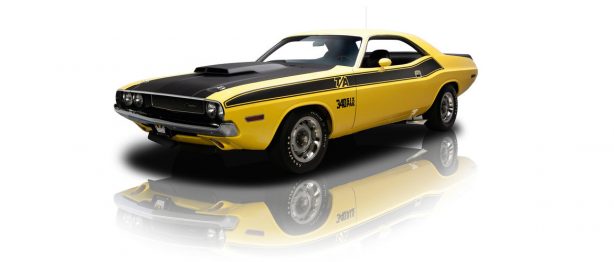
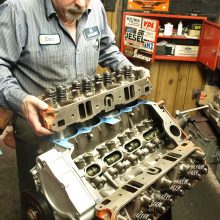
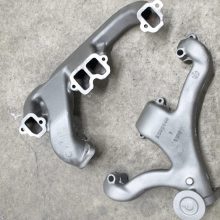

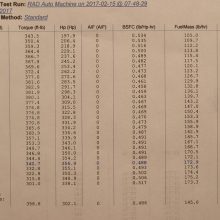

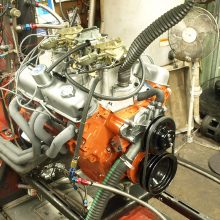
0 Comments